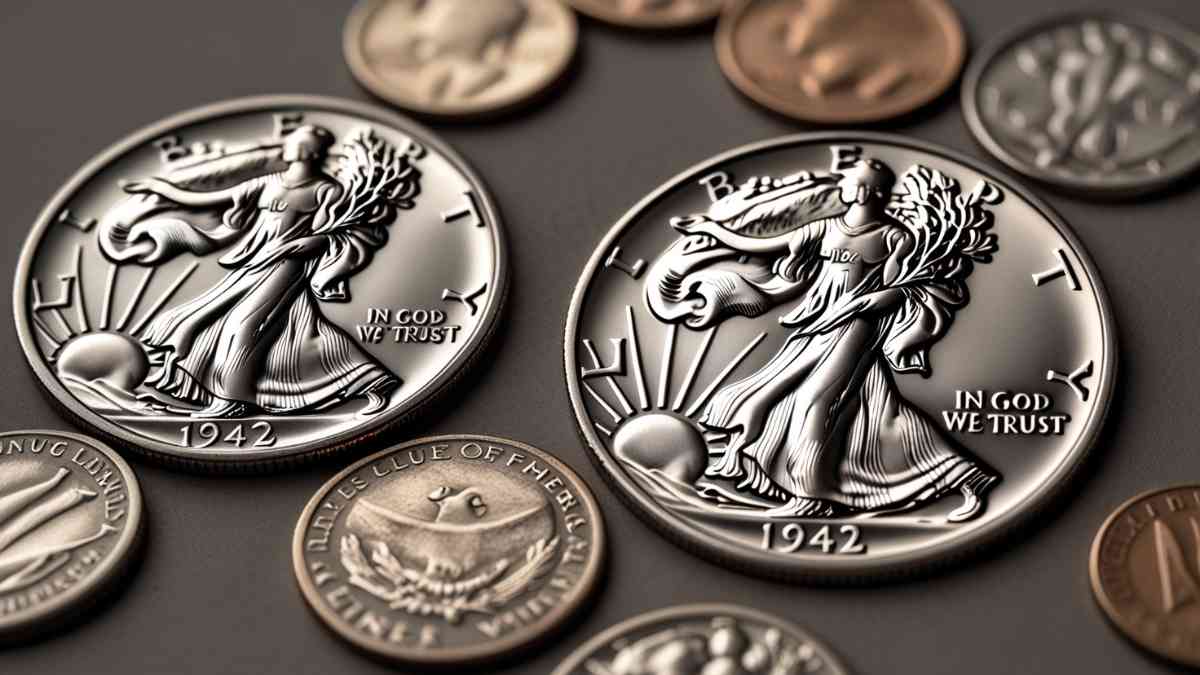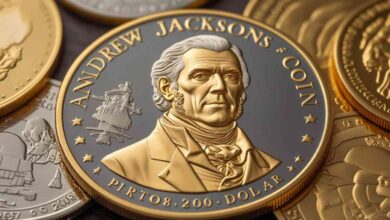1942 Half Dollar Value: Unlocking the Worth of a Wartime Classic

The 1942 half dollar is far more than just a piece of currency — it’s a slice of American history struck during the height of World War II. This silver coin, featuring the iconic Walking Liberty design, has become one of the most admired half dollars among numismatists and collectors. Whether you stumbled upon one in your grandparent’s old coin jar or intentionally invested in U.S. coinage, understanding the 1942 half dollar value can be a rewarding pursuit.
In this guide, we break down everything from its background and mint variations to how condition affects value. We’ll also explore related keyword topics like the 1942 liberty half dollar value, 1942 walking liberty half dollar value, and more.
The Walking Liberty Design: An Artistic Masterpiece
Adolph A. Weinman, a well-known sculptor, designed the Walking Liberty half dollar, which was minted from 1916 to 1947. The front (obverse) shows Lady Liberty walking confidently toward the rising sun, draped in the American flag, holding olive branches — a symbol of peace.
The back (reverse) features a powerful bald eagle perched on a mountaintop. This design has such timeless appeal that it later inspired the American Silver Eagle bullion coin beginning in 1986.
The 1942 half dollar belongs to this beautiful lineage and remains a fan favorite for its artistry and historical relevance.
Mints That Struck the 1942 Half Dollar
The 1942 half dollar was produced in three U.S. Mint locations:
-
Philadelphia (no mint mark)
-
Denver (D mint mark)
-
San Francisco (S mint mark)
Each mint produced millions of coins, but today their values differ based on scarcity and collector demand. Below is a breakdown of mintage figures:
| Mint Location | Mintage | Mint Mark |
|---|---|---|
| Philadelphia | 47,818,000 | None |
| Denver | 10,973,800 | D |
| San Francisco | 12,708,000 | S |
These figures impact the market significantly when assessing the 1942 walking liberty half dollar value.
What Is the 1942 Half Dollar Made Of?
Each 1942 half dollar is composed of 90% silver and 10% copper, weighing 12.5 grams. That means even in the worst condition, the coin has intrinsic value based on silver content alone — usually referred to as melt value.
Key Specifications:
-
Weight: 12.5 grams
-
Diameter: 30.6 mm
-
Metal Content: 90% silver, 10% copper
-
Silver Weight: 0.3617 troy ounces
As of recent silver prices, that puts the melt value of a 1942 half dollar at around $9–$11, depending on market conditions. But most coins trade for far more due to collector interest.
Circulated vs. Uncirculated: Condition Dictates Worth
The condition of your coin plays the biggest role in determining the value of a 1942 half dollar. Here’s a general breakdown based on grading:
Circulated Coin Values:
-
Good (G-4): $13 – $18
-
Very Fine (VF-20): $20 – $35
-
Extremely Fine (EF-40): $35 – $50
Uncirculated Coin Values:
-
Mint State 60 (MS-60): $60 – $90
-
Mint State 65 (MS-65): $150 – $250+
-
Proof (PR-65): $500 – $1,200+ (especially rare)
If you own a pristine, uncirculated example — particularly from the San Francisco or Denver mints — it could be highly valuable to collectors.
Proof Coins: Rare and Highly Prized
Only the Philadelphia Mint struck proof versions of the 1942 half dollar, and fewer than 22,000 were minted. These coins were never intended for circulation and were sold directly to collectors.
If you possess a 1942 proof half dollar, you might be holding something worth hundreds, or even thousands, depending on grade.
Noteworthy Auction Sales and Collector Highlights
Some rare examples of the 1942 walking liberty half dollar have fetched significant amounts at auctions:
-
MS-67 (San Francisco Mint): Sold for over $60,000 at a major coin auction.
-
Proof PR-68: Estimated to reach over $10,000, especially when graded by NGC or PCGS.
Coins with exceptional luster, strike quality, and minimal surface marks are the most likely to achieve these high values.
How to Identify a Fake 1942 Half Dollar
As values rise, so does the chance of encountering counterfeits. Watch for the following red flags:
-
Weight deviation (should be ~12.5g)
-
Non-silver sound (silver coins have a distinct “ring”)
-
Poor engraving detail
-
Wrong mint mark location or font
If you’re unsure, always consult a professional coin grader or dealer.
How to Store and Protect Your 1942 Half Dollar
To preserve or even increase the 1942 liberty half dollar value, store your coin properly:
-
Use non-PVC holders or acid-free flips
-
Keep it away from humidity and air exposure
-
Avoid direct handling — use gloves to prevent oils from damaging the surface
For especially valuable coins, consider third-party grading services like PCGS or NGC to encapsulate and certify your coin’s grade.
Tips for Selling Your Coin
If you’re ready to sell your 1942 half dollar, consider these avenues:
-
Coin dealers: Immediate cash but lower prices.
-
Online marketplaces: Potential for higher profits but more risk.
-
Coin shows or auctions: Best for rare or high-grade pieces.
Always compare offers and understand your coin’s grade before agreeing to sell.
Common Myths About the 1942 Half Dollar
Let’s clear up a few misconceptions:
-
❌ “All 1942 half dollars are extremely rare.”
→ Most are common unless in pristine or proof condition. -
❌ “They’re made of pure silver.”
→ They contain 90% silver, not 100%. -
❌ “Only Philadelphia coins are valuable.”
→ San Francisco and Denver mint coins often carry premiums, especially in MS condition.
A Quick Look at Related Values
To help you understand nuances in naming, here’s how other searches relate:
| Search Term | Explanation |
|---|---|
| 1942 liberty half dollar value | General name used, interchangeable with Walking Liberty |
| 1942 walking liberty half dollar value | Most accurate descriptor |
| 1942 standing liberty half dollar value | Incorrect — no standing liberty half dollars were minted in 1942 |
This highlights the importance of knowing exactly what you’re looking at and using the right terminology.
Conclusion
Absolutely. Whether you’re a seasoned collector or new to coin collecting, the 1942 half dollar offers beauty, history, and tangible value. It’s a piece that reflects American artistry and wartime heritage, and with silver content and collectible demand, it’s more than just spare change.
So before tossing it into a jar or letting it gather dust, get it graded, protect it, and consider its place in your collection — or its potential market worth.
Explore your old coins — you might just be holding a piece of American treasure.



